Solo Travel in Japan
Wake Up in the Land of the Rising Sun
Article and photos by Lies Ouwerkerk
Senior Contributing Editor
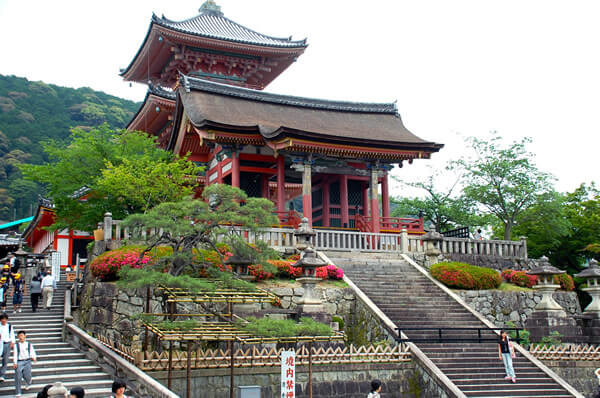
|
|
Visiting a temple.
|
When my plane touches down on Tokyo’s Narita airport, I sense a split-second of panic: will I be able to survive in this totally unknown territory without one word of Japanese or the ability to decipher Japanese characters?
But my apprehension has already evaporated by the time I enter the arrival hall, where signs in both Japanese and English swiftly lead me to the underground train station. There, a friendly inspector directs me in perfect English to the appropriate platform, and once on the ”Keisei Skyliner,” a sweet older lady takes me under her wings and makes sure I get off at Nippori station.
Preparations Before Arriving in Tokyo
The Tokyo area is immense, extending about 90 km from east to west and 25 km from north to south, so I had searched on the web for hotels close to a downtown station or metro. In that way, I would avoid taxis, which are an expensive means of transportation in Tokyo.
After comparing reviews on hotel websites, and cross-referencing my final picks on search engines, I zoomed in on Annex Katsutaro because it would not only be seven minutes walking distance from Nippori station, but also very close to a subway. Moreover, they spoke English, offered free internet, and featured a traditional ryokan–style inn with private bathrooms at an affordable price, especially for Tokyo standards. Once I had made the reservation, I quizzed the owner by email on ways to reach the place, after which he sent me detailed maps and instructions, as well as a message in Japanese for a potential taxi driver.
I also came equipped with some Japanese yen, at least enough for the initial train ride, so that I did not have to bother exchanging money right away.
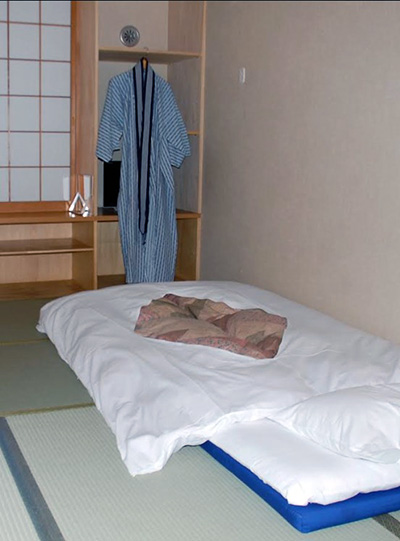
|
|
My minimalist room in the ryokan.
|
Ryokan
Annex Katsutaro, a simple but efficient inn, is located in a vibrant and charming residential neighborhood with narrow streets full of small shops and restaurants. Although the building is new, the sleeping quarters are arranged in traditional Japanese style: a small entrance way to take off your shoes before stepping through the Japanese sliding doors into a minimalist tatami-matted room with yukata (Japanese house coat) and futon. Unlike other ryokan I subsequently visit, no traditional meals are included (only an optional western style breakfast) nor onsen (traditional bath).
I prefer staying in smaller lodgings, because they are usually great sources of information. The friendly owner of Annex Katsutaro is no exception and updates me in good English where to find the best eateries, what major sights not to miss, and how to get around in Tokyo.
With a JR rail Pass I can travel for free on the circular 34.5 km Yamanote line, which goes all around downtown Tokyo and stops at nearly all major stations, as well as on the Chuo-Sobu line which crosses Tokyo from east to west.
For the Tokyo Metro lines, operated by different companies and connecting the bigger stations of the Yamanote and Chuo-Sobu lines, I can purchase an open ticket for 710 yen per day or 980 yen for two days at the vending machines inside the metro stations. Another important tip: most ATM’s don’t accept foreign cards, only those in post offices and 7-11 stores do (English menu available).
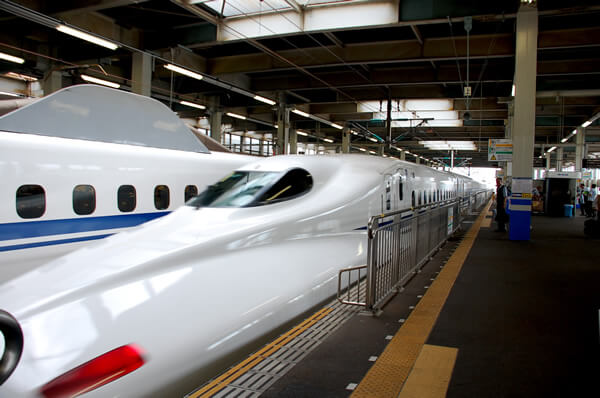
|
|
Bullet trains parked at a train station in Japan.
|
The JR Train Pass
On the Japan Forum of Tripadvisor I had been informed by other travelers that buying a JR train pass would definitely make sense given the long distances I would travel. So I had purchased a pass online when still at home, as this cannot be done in Japan itself. A voucher, sent to my home address by Federal Express, had to be exchanged for a real JR Pass at one of the JR ticket counters in Japan. These are located in all bigger stations, indicated by green signs, and provide service in English.
A JR Pass is valid for most long-distance bullet trains, but can also be used on many local and regional trains. For instance, while staying in Tokyo, I regularly ride the circular Yamanote line, and use the JR Narita Express from Tokyo Station to travel eventually back to Narita Airport; in Kyoto, I use JR lines to reach the Arashiyama bamboo grove and the ancient capital Nara; and from Fukuoka, I board the classy No Mori sightseeing-train that brings me to the onsen town of Yufuin in about 2 hours. These extra perks make purchasing a JR Pass even more worthwhile.
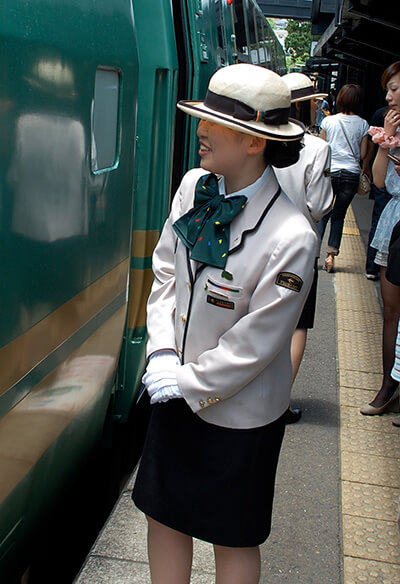
|
|
Hostess for luxury No Mori train.
|
The Shinkansen
Although reserving a seat on the streamlined bullet trains (Shinkansen) is not mandatory, it certainly gives peace of mind. Reservations can be made at any JR ticket counter up to one month before traveling, free of charge. Unreserved seats are usually located in the first few cars of the train.
There is a choice between riding ordinary or green (1st class) cars, the latter obviously more expensive, offering rows of 2x2 seats instead of 3x2.
I find the space in ordinary Shinkansen cars already quite generous (large enough to place a suitcase in my foot space!) and cars are never completely full. Beware of rush hour, though, when millions of commuters flock into trains and subways to reach their workstations in the morning (7-9 am) and to return to their distant bedroom towns at night (5-7 pm).
The Shinkansen lines vary in names according to their itinerary: the Tokaido runs from Tokyo to Osaka; the Sanyo from Osaka to Fukuoka, etc. The various train categories (Nozomi, Hikari, Sakura, etc.) indicate how fast a train runs and how often they may stop. The Nozomi, the fastest train with a speed of 300 km per hour and with the fewest stops, can unfortunately not be used with a JR pass.
At the Station and in the Train
JR Pass holders cannot walk through the automatic ticket gates in the station, but have to show their pass to staff at the manned gate on the side. Twice an inspector asks me for identification, so it is a good idea to keep your passport handy.
Japanese stations do not have porter service, but there are escalators and lifts in every major station to reach the appropriate platform (keep in mind that Japan is a left-hand traffic country, and that most pedestrians in station corridors and on escalators keep to the left as well, unless indicated otherwise).
Although departure times and corresponding platforms are displayed on bilingual boards, I also double-check with staff at the gates.
Floor markings on the platform show where the train doors are for each car stop. Japanese passengers are extremely disciplined: they form a neat line at their assigned door locations and wait patiently until those leaving the train have descended. Then it is time to quickly board the train, as waiting time at each station is limited.
Train doors and platforms are at equal height, which makes it easy to roll a suitcase into the train.
Seats are numbered and lettered in the same style as on airplanes. They can be turned 180 degrees, enabling passengers to always face forward. It is wise to keep your ticket handy for the white-gloved ticket inspector, who will routinely make a bow facing the passengers before continuing to the next car.
On all Shinkansen lines, the announcements and signs (usually above the door) are in Japanese and English. Since Japanese trains are extremely punctual, I also rely on the arrival time indicated on my ticket, to know where to get off.
Western style toilets and regular trolley service are on board of all Shinkansen.
It is common courtesy not to talk on cell phones during the ride.
Food in Japan
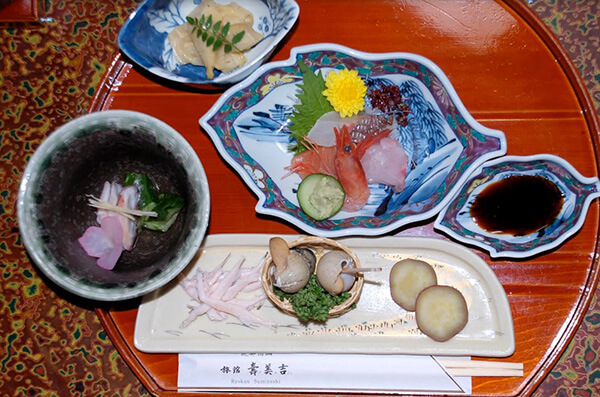
|
|
A multi-course dinner enjoyed while at Ryokan Sumiyoshi in Japan.
|
Japan is a true foodies’ paradise, and I never have to search too long for excellent and affordable eateries. Also the big subterranean food halls (depachikas) of large department stores such as Takashimaya, and train stations such as Tokyo, Kyoto or Hakata, offer tantalizing hotpots (nabe) and a great variety of rice, noodles, seafood, meat, and tempura dishes. Choosing and ordering is always easy because I can point at the plastic or wax replicas — crafted by Japanese artisans — which restaurants display in their windows or outside. And when it comes to paying bills, no words are needed either: I just make a cross with both my index fingers (= bill please!).
Besides my basement food adventures, I also enjoy dinners in the various ryokan I stay in. The delightful Ryokan Sumiyoshi in historic Takayama in the Japanese Alps tops my list. Savoring their regional multi-course meals, presented as true pieces of art and carried into my room by lovely hostesses in their traditional yukata, is an unforgettable experience.

|
|
Dinner served at a ryokan by a hostess.
|
Onsen (Hot Spring Bath)
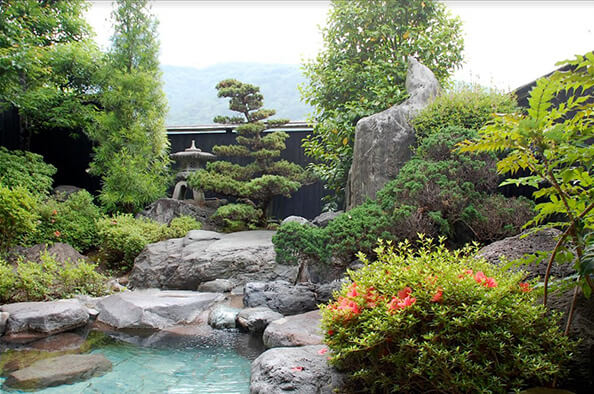
|
|
An onsen in Japan.
|
Bathing in an onsen or hot spring bath, is such a distinctive aspect of Japanese culture that it should be experienced at least once while staying in Japan. In the end of my journey I decide to take the JR train from Fukuoka to historic Yufuin on Kyushu Island, for an overnight stay in one of the many onsen hotels in the Mount Aso region. From the front view seating area in the No Mori train with its magnificent solid wood interiors, I watch bamboo and pine forests, small villages with typical Japanese houses, farmers working in their tiny rice paddies, hills and mountains, river streams, and waterfalls.
Although Yufuin is a bit too touristy for my taste, the open-air hot spring baths of onsen Yawaraginosato definitely do not disappoint. The baths, surrounded by natural stone walls, can be reserved by the hour for private use (the onsen in the far end has the best view) from early morning until late at night. And what can beat a hot soak amidst lush greenery, at night under the zillions of stars or at dawn when the sun slowly rises over the Yufudake mountain ridge?
Lies Ouwerkerk is originally from Amsterdam, The Netherlands, and currently lives in Montreal, Canada. Previously a columnist for The Sherbrooke Record, she is presently a freelance writer and photographer for various travel magazines.
|
